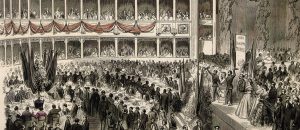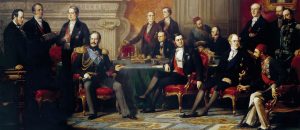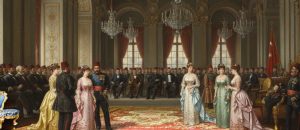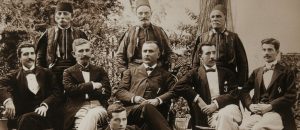The hundreds of antique clocks displayed in the halls and corridors of Dolmabahçe Palace are not just mechanical instruments that show the time, but also the heart, beating with the tick-tock sounds of the Ottoman adoption of the Western concept of time, and the entry of punctuality and modern bureaucracy into palace life. Symbolizing the transition from the traditional “alaturka” concept of time (ezani time, based on the movement of the sun) to the standard European “alafranga” time standard (the mechanical clock based on 12 midnight), this collection reached its zenith during the reign of Sultan II Abdülhamid, who had a personal passion for clocks. The palace’s clock collection is the most concrete and mechanical proof of how an abstract concept like Westernization changed the rhythm of daily life. [Link: Dolmahçe Palace Collections -> /explore/palace-collections]
From Alaturka to Alafranga: The Revolution in the Perception of Time
In traditional Ottoman society, time was measured by the “ezani clock” system, which was adjusted according to prayer times and where the day began anew at sunset. This was an organic and flexible perception of time, compatible with an agricultural and religious rhythm of life. However, in the 19th century, train schedules, ferry timetables, international telegraph communication, and the standardized operational plans of a modern army necessitated a fixed and mechanical time standard valid for everyone. This was the “alafranga clock” system used in Europe.
[Link: The construction of the Dolmabahçe Clock Tower -> /sarayin-golgesindeki-sehir-saat-kulesi-ve-akaretler-modern-istanbulu-nasil-sekillendirdi], was the public declaration of this new understanding of time. The clock collection inside the palace, meanwhile, was an indicator of how this new rhythm penetrated even the most private corners of palace life.
A Collection of a Passion: Sultan II Abdülhamid and Clocks
The largest share in the enrichment of the clock collections of Dolmabahçe and Yıldız Palaces belongs to Sultan II Abdülhamid, who had a personal curiosity and passion for clocks. For him, clocks were not just accessories or gifts, but symbols of Western technology, mechanical order, and precision, which he admired.
- Personal Interest: It is known that the Sultan was personally involved in the maintenance and repair of the clocks in the palace, and even had a clock repair workshop established in the palace. This is another reflection of his [Link: aptitude for mechanical skills such as carpentry -> /marangoz-hunkar-sultan-ii-abdulhamidin-saraydaki-atolyesi-ve-polisiye-roman-tutkusu].
- Diplomatic Gifts: Foreign monarchs, knowing of the Sultan’s passion, would gift him the most valuable and complex clocks. These diplomatic gifts from Britain, France, Germany, and Russia constitute the rarest pieces of the collection.
- Encouragement of Domestic Production: Sultan Abdülhamid was not content with only imported clocks; he also encouraged high-quality clock production in the Ottoman Empire by supporting local artisans like Musa Dede, a Mevlevi dervish and master clockmaker.
The Stars of the Collection: From Breguet to Mevlevi Clocks
The clock collection of Dolmabahçe Palace brings together the most important brands and styles of 19th-century watchmaking:
- French Elegance: Mantel and table clocks bearing the signature of legendary French masters like Abraham-Louis Breguet, decorated with gold and precious stones, are the most artistic pieces of the collection.
- English Precision: English-made floor and wall clocks, with simpler but extremely precise mechanisms, emphasize the importance of punctuality and order.
- Mechanical Marvels: Clocks with complex features such as music boxes, automatons (with moving figures), or calendars showcase the astonishing level reached by Western technology.
- Local Genius: The clocks of Musa Dede, which bear the “Mevlevi Sikkesi” (Mevlevi emblem) and show both alafranga and alaturka time simultaneously, are unique works of synthesis that combine Eastern and Western time in the same mechanism.
And of course, the most poignant piece in the collection is the clock in the room where Atatürk passed away, stopped at five past nine. This clock transcends its function of measuring time, becoming a monument that symbolizes the moment when a nation’s time stood still.
Conclusion
In conclusion, the clock collection of Dolmabahçe Palace is the tick-tock sound of Westernization. These clocks symbolize the transition of the Ottoman Palace and state from a traditional, flexible, and sun-based perception of time to the mechanical, punctual, and standardized rhythm required by the modern world. This collection, which reached its zenith with the personal passion of Sultan II Abdülhamid, is the most elegant and mechanical proof of how order, efficiency, and modern bureaucracy were placed at the center of palace life. Time was no longer just a concept that flowed by, but a power to be managed and controlled; and with these clocks, the Sultan was declaring himself the “master of time.”
















